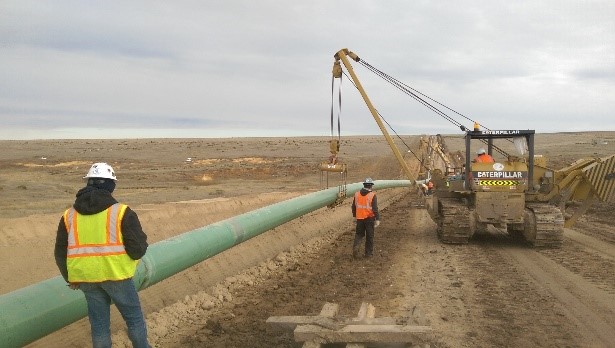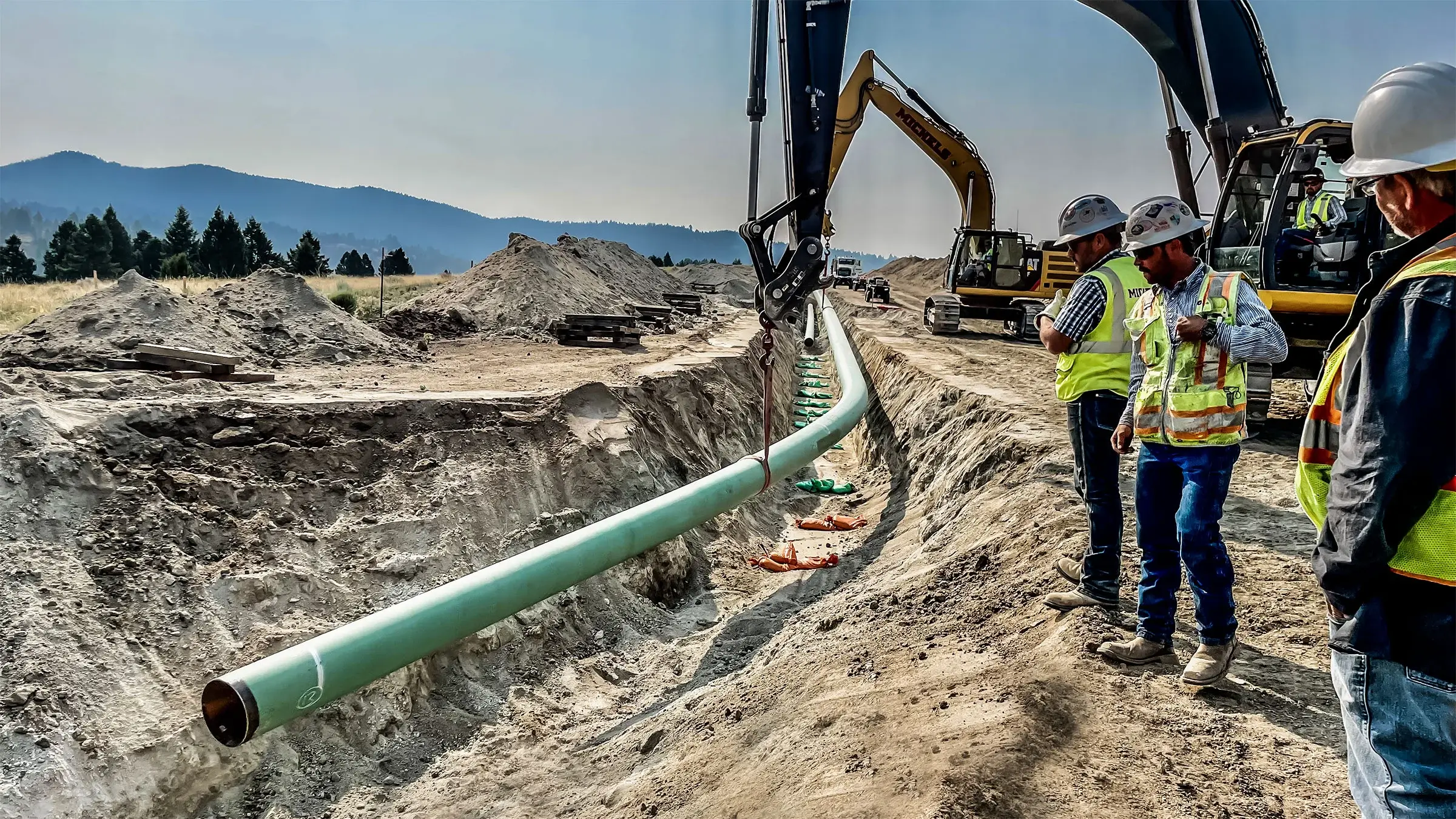Why Expert Services from Creek Pipe Company Are Essential for Reliable Pipe Installation
What You Should Learn About Pipe Trenching Solutions: A Thorough Introduction of Available Options
Pipe trenching solutions are important for the installment and upkeep of below ground energies. They include numerous approaches tailored to certain requirements and environments. Understanding these approaches is crucial for effective task execution. Each alternative offers its very own set of advantages and obstacles. As the need for efficient utility administration rises, recognizing what to take into account when picking a trenching service comes to be imperative. What aspects should one prioritize to assure success?
Recognizing Pipe Trenching: What It Is and Why It Issues
Commonly ignored, pipe trenching is an important process in various construction and utility projects. This strategy entails excavating narrow trenches to assist in the installment of pipes for water, gas, sewage, and telecommunications. The value of pipeline trenching depends on its duty in making certain that these important systems are effectively integrated right into infrastructure, making it possible for the risk-free and efficient delivery of needed services.Proper trenching is crucial for maintaining the integrity of pipelines and lessening threats connected with dirt erosion and collapses. It also enables effective assessments and maintenance of below ground energies. In addition, comprehending the local guidelines and environmental factors to consider is crucial, as incorrect trenching can result in pricey hold-ups and legal issues. Eventually, pipe trenching acts as the fundamental action that supports various building and construction undertakings, making it a substantial element of modern-day facilities advancement.
Common Trenching Techniques for Underground Utilities
In the domain of underground utilities, different trenching techniques play an important duty in installation and upkeep - Creek Pipe trenching services. The open-cut trenching technique, directional boring method, and hydro excavation process each offer one-of-a-kind advantages depending upon the specific project requirements. Understanding these techniques is important for reliable and efficient utility administration
Open-Cut Trenching Technique
Open-cut trenching is a commonly used technique for setting up below ground energies, particularly when the deepness and width of the trench permit reliable accessibility. This method includes digging deep into a trench along the recommended course of the energy, supplying straight exposure and access for installment. It is specifically advantageous for jobs that require substantial excavation, as it helps with fast setup and examination. It also necessitates careful planning to reduce disturbance to the surrounding area, consisting of web traffic and existing frameworks. Open-cut trenching is most effective in open rooms where the soil conditions are beneficial, yet it may be limited in city atmospheres as a result of the visibility of existing energies and various other below ground obstacles.
Directional Boring Method

Hydro Excavation Process
Exactly how does hydro excavation stand out amongst typical trenching techniques for below ground energies? Hydro excavation utilizes high-pressure water and vacuum technology to safely eliminate dirt, permitting for precise digging around delicate below ground energies. This approach decreases the risk of destructive existing framework contrasted to typical mechanical excavation. By utilizing water to loosen the soil, hydro excavation offers a much less invasive technique, decreasing the capacity for soil compaction and making sure a cleaner worksite. In addition, the procedure enhances exposure throughout excavation, enhancing overall precision and efficiency. Hydro excavation is particularly helpful in metropolitan locations where utility lines are densely loaded, making it a favored selection for service providers concentrated on safety and precision in underground tasks.
Advantages of Trenching Providers
While various methods exist for mounting underground energies, trenching solutions provide distinct benefits that make them a recommended choice for numerous jobs. One considerable advantage is the cost-effectiveness of trenching, as it typically needs much less specific devices contrasted to choices like hydro excavation. This often causes lower labor and operational expenses. Furthermore, trenching can accommodate a vast range of utility types, consisting of water, sewage system, and gas lines, giving versatility for contractors.Moreover, trenching permits for effective accessibility to numerous lines in a solitary excavation, lessening disturbance to the surrounding location. The procedure also enables accurate setup and repair service, which is crucial for sticking to regulatory criteria and making certain long-lasting reliability. Inevitably, trenching can be executed reasonably promptly, lowering project timelines and permitting faster service reconstruction. These benefits jointly make trenching services a functional alternative for several below ground utility tasks.
Drawbacks and Difficulties of Trenching
In spite of the many benefits of trenching solutions, there are noteworthy disadvantages and difficulties that have to be considered. One substantial difficulty is the potential for dirt instability, which can lead to cave-ins, posing threats to workers and devices. In addition, trenching can interrupt existing energy lines, requiring cautious preparation and coordination to prevent service interruptions. The procedure can likewise be time-consuming, specifically in urban locations where area is limited and accessibility is limited. Trenching may call for considerable licenses and regulative compliance, adding complexity and prospective delays to tasks. Ecological problems, such as soil disintegration and damages to regional communities, can occur from inappropriate trenching methods. Finally, the prices related to trenching, including labor and devices, can escalate if unanticipated concerns develop during the task, making it important for stakeholders to consider these difficulties against the benefits when thinking about trenching solutions.
Secret Factors to Take Into Consideration When Selecting a Trenching Service
Selecting the right trenching service can substantially influence the success of a task. Numerous crucial elements should be examined to ensure a suitable selection. Initially, the firm's experience and proficiency in trenching operations are essential; a reputable solution with a strong performance history is commonly much more dependable. Next, evaluating the devices utilized is essential, as contemporary equipment can improve efficiency and precision. Additionally, it is significant to think about the variety of services provided, consisting of excavation depth and soil type handling, to verify they satisfy specific task requirements.Another aspect to testimonial is the business's credibility; consumer testimonials and testimonials can provide understandings right into previous performance. Getting detailed quotes that describe prices and timelines will assist in budget administration. Validating conformity with local laws and industry requirements is crucial for avoiding possible lawful issues. By reviewing these variables, customers can make a notified choice when choosing a trenching service.
Security Measures in Pipe Trenching
In this website pipeline trenching, safety steps are vital to guaranteeing employee defense and website integrity. Trick parts include using individual protective devices, comprehensive excavation site assessments, and distinct emergency situation response protocols. Implementing these measures greatly decreases dangers related to trenching operations.
Individual Safety Devices
Safety in pipeline you can try this out trenching heavily counts on the proper use of personal safety tools (PPE) Workers must wear construction hats to shield versus falling items, along with high-visibility vests to improve their presence on-site. Steel-toed boots are important for foot security against hefty devices and materials. In addition, gloves are essential for hand safety, specifically when handling harsh or sharp items. Respirators may likewise be needed in settings with dirt or hazardous fumes. Eye defense, such as safety and security goggles, ought to be used to protect against debris. Listening to defense is important in noisy job atmospheres. By sticking to PPE standards, workers can significantly lower the risk of injury and assure a much safer trenching procedure.
Excavation Website Examination
Appropriately evaluating the excavation site is a fundamental action in guaranteeing a safe pipe trenching procedure. This process involves assessing the website for prospective hazards such as underground utilities, unstable soil conditions, and nearby structures. An extensive evaluation enables the identification of risks that could endanger employee safety and security. Furthermore, confirming the soil type and moisture levels can aid establish proper shoring approaches to avoid trench collapses. It is vital to assure that the website is clear of debris and that appropriate signs is shown to signal workers of continuous procedures. Regular examinations throughout the task can additionally help find any adjustments in site problems, allowing prompt modifications to safety procedures and work methods.

Emergency Reaction Protocols
Emergency situation feedback methods are essential in mitigating threats connected with pipeline trenching procedures. These methods guarantee that all workers are prepared to act promptly and efficiently in emergencies. Trick components include normal safety and security drills, clear communication networks, and designated emergency exits. In addition, first-aid kits and emergency situation contact numbers must be easily available on-site. Trenching operations should also include procedures for taking care of harmful situations, such as collapses or energy strikes. Educating workers on identifying potential hazards and recognizing their functions during an emergency situation is essential. Keeping an upgraded website safety strategy can substantially boost reaction effectiveness. Generally, effective emergency readiness fosters a more secure working setting and reduces the effect of unanticipated events.
Expense Factors To Consider for Trenching Solutions
Comprehending the monetary implications of trenching solutions is necessary for task planning and budgeting. The prices linked with trenching can differ extensively based upon several variables, including project dimension, soil type, and deepness of the trench. Labor prices often represent a substantial section of the total expenditure, as proficient operators are necessary for efficient implementation. In addition, equipment leasing fees can add to the total budget, especially for specialized machinery.Site accessibility is an additional important variable; hard terrain may demand extra sources, boosting costs. Permitting and governing compliance can likewise include in expenses, specifically in city locations where guidelines are stringent.Lastly, unpredicted difficulties, such as coming across existing utilities, can bring about unanticipated sewer pipe cleaning costs and delays. Consequently, getting in-depth estimates from reliable trenching provider is necessary for exact budgeting and ensuring successful project completion.
Regularly Asked Questions
The length of time Does a Typical Pipe Trenching Task Take?
The duration of a regular pipe trenching task varies substantially based on elements such as depth, dirt problems, and task intricacy. Typically, it can take anywhere from a couple of days to several weeks to finish.
What Devices Is Frequently Used in Pipe Trenching?

Are There Environmental Laws for Trenching Activities?
Ecological regulations for trenching tasks frequently require compliance with local, state, and federal guidelines. These regulations aim to reduce environmental disruption, protect water resources, and guarantee proper waste monitoring during excavation and installation procedures.
Can Trenching Providers Be Integrated With Various Other Building And Construction Projects?
Trenching services can indeed be incorporated with various building projects. By working with efforts, efficiencies can be achieved, lessening disruptions while guaranteeing that all needed infrastructure work is completed in a prompt and affordable way.
What Prevail Dirt Types Experienced in Trenching?
Typical dirt types experienced in trenching consist of clay, sand, silt, and loam. Each kind presents unique difficulties, impacting excavation approaches and security, necessitating mindful planning to ensure safe and efficient trenching operations.